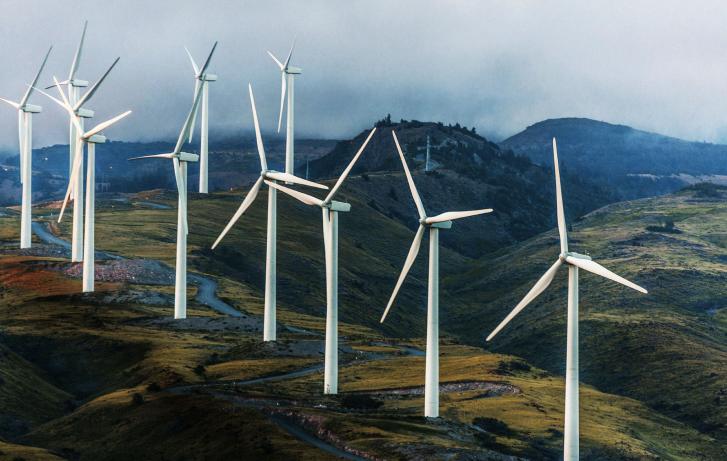
In the lead-up to this autumn's COP26 event in Glasgow, through our 'Oxfordshire gears-up for COP26' series, we will be showcasing the many examples of how Oxfordshire’s immense energy expertise is being applied to exploring the boundaries of future energy and, ultimately, a drive towards a zero-carbon future:
The now-familiar sight of traditional propeller wind turbines could be replaced in the future with wind farms containing more compact and efficient vertical turbines.
New research from Oxford Brookes University has found that the vertical turbine design is far more efficient than traditional turbines in large scale wind farms, and when set in pairs the vertical turbines increase each other’s performance by up to 15%.
A research team from the School of Engineering, Computing and Mathematics (ECM) at Oxford Brookes led by Professor Iakovos Tzanakis conducted an in-depth study using more than 11,500 hours of computer simulation to show that wind farms can perform more efficiently by substituting the traditional propeller type Horizontal Axis Wind Turbines (HAWTs), for compact Vertical Axis Wind Turbines (VAWTs).
Vertical turbines are more efficient than traditional windmill turbines:
The research demonstrates for the first time at a realistic scale, the potential of large scale VAWTs to outcompete current HAWT wind farm turbines.
VAWTs spin around an axis vertical to the ground, and they exhibit the opposite behaviour of the well-known propeller design (HAWTs). The research found that VAWTs increase each other’s performance when arranged in grid formations. Positioning wind turbines to maximise outputs is critical to the design of wind farms.
Professor Tzanakis comments “This study evidences that the future of wind farms should be vertical. Vertical axis wind farm turbines can be designed to be much closer together, increasing their efficiency and ultimately lowering the prices of electricity.
In the long run, VAWTs can help accelerate the green transition of our energy systems, so that more clean and sustainable energy comes from renewable sources.”
With the UK’s wind energy capacity expected to almost double by 2030, the findings are a stepping stone towards designing more efficient wind farms, understanding large scale wind energy harvesting techniques and ultimately improving the renewable energy technology to more quickly replace fossil fuels as sources of energy.
Cost effective way to meet wind power targets:
According to the Global Wind Report 2021, the world needs to be installing wind power three times faster over the next decade, in order to meet net zero targets and avoid the worst impacts of climate change.
Lead author of the report and Bachelor of Engineering graduate Joachim Toftegaard Hansen added: “Modern wind farms are one of the most efficient ways to generate green energy, however, they have one major flaw: as the wind approaches the front row of turbines, turbulence will be generated downstream. The turbulence is detrimental to the performance of the subsequent rows.
“In other words, the front row will convert about half the kinetic energy of the wind into electricity, whereas for the back row, that number is down to 25-30%. Each turbine costs more than £2 million/MW. As an engineer, it naturally occurred to me that there must be a more cost-effective way.”
The study is the first to comprehensively analyse many aspects of wind turbine performance, with regards to array angle, direction of rotation, turbine spacing, and number of rotors. It is also the first research to investigate whether the performance improvements hold true for three VAWT turbines set in a series.
The research Numerical modelling and optimization of vertical axis wind turbine pairs: A scale up approach was published in the International Journal of Renewable Energy (ELSEVIER).
The 26th UN Climate Change Conference of the Parties (or 'COP26') takes place in Glasgow this November. The summit brings parties together to accelerate action towards the goals of the Paris Agreement and the UN Framework Convention on Climate Change.
In Oxfordshire, the low carbon energy sector generates £1.15bn a year. Over the past half-decade, the county has attracted £2bn in foreign direct investment. Oxfordshire’s Energy Strategy backs a drive towards zero-carbon growth by 2050 will help to spearhead a further £1.35bn annually to our economy, creating at least 11,000 new jobs in the low-carbon sector by 2030.




